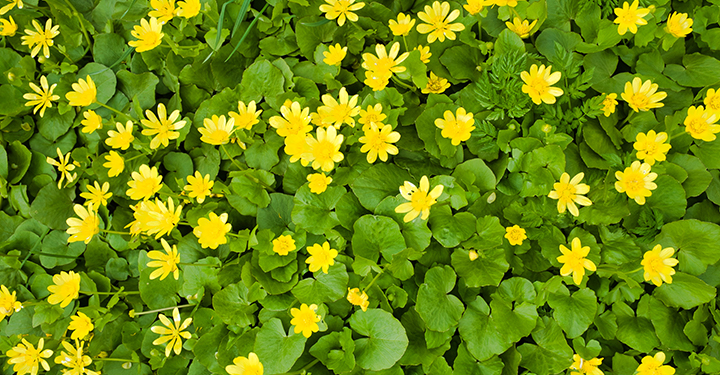Lesser Celandine – The Other Yellow Flower Weed
The most notorious weed with a yellow flower in Cincinnati and Dayton lawns is the Dandelion. You see dandelions scattered all over lawns in the Spring, Summer, and Fall. This weed is very common and easy to control. However, there is another turf weed with a yellow flower that has been showing up more often in Southern Ohio lawns called Lesser Celandine. This is a non-native invasive plant which can grow in clumps and has shiny green heart-shaped leaves with yellow flowers. Lesser Celandine will show up in Late January-February and will go away later in the Spring. You may see this invasive plant scattered throughout the woods or along a creek while hiking a trail. We are now seeing it move into residential lawns.
What does it look like?
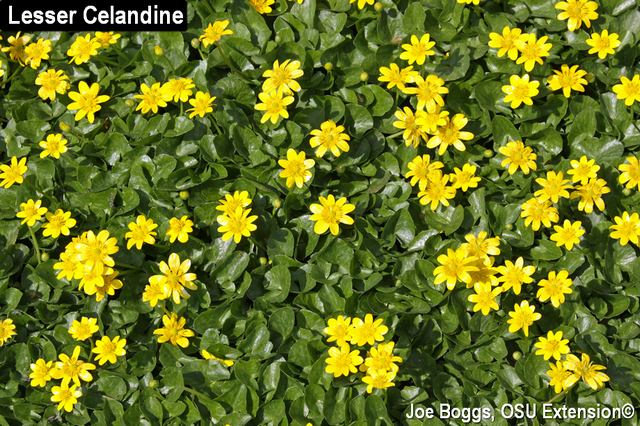
May Be Confused With
If you see yellow flowers in your lawn in Late Spring, Summer, or Fall you are seeing Dandelions and NOT Lesser Celandine. If you are seeing yellow flowers in Early Spring, you may have Lesser Celandine on you property.
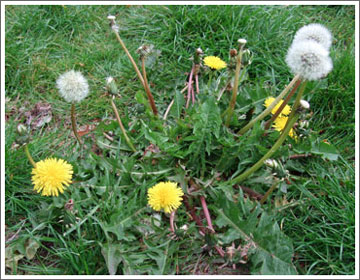
DANDELION
Wild Violets can also look like Lesser Celandine, but have purple flowers instead of yellow. Wild Violets also are visible in lawns all year round, while Lesser Celandine will melt out and disappear later in the Spring.
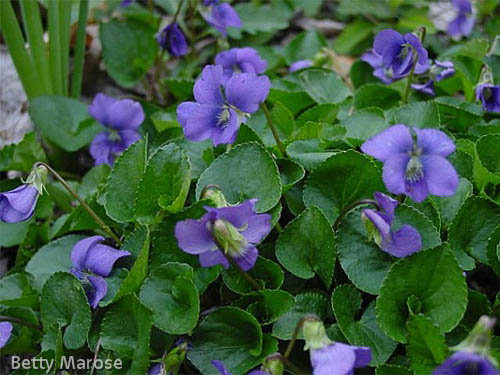
WILD VIOLET
Why Should You Care?
Lesser Celandine can spread. Below is a picture of how this area of the woods has been completely taken over by this plant.
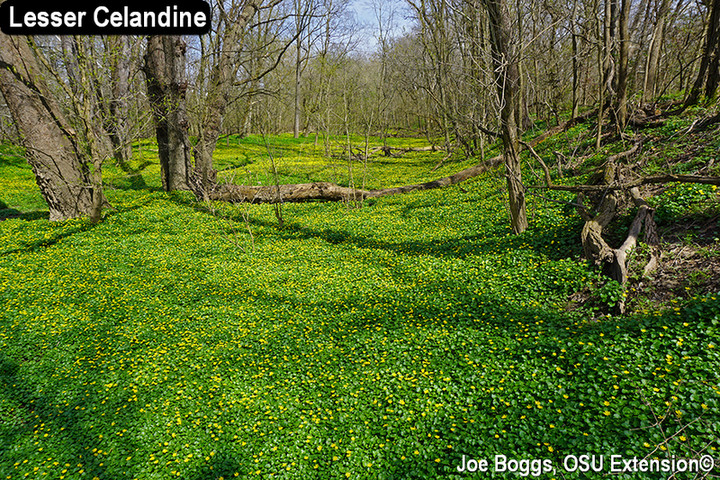
This picture shows early infestation and how it is just a clump before it starts to take over.
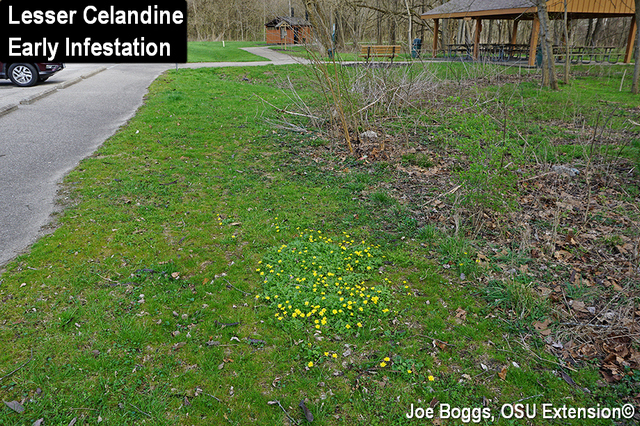
How to Control Lesser Celandine?
So how do we control Lesser Celandine in Cincinnati and Dayton lawns? The Ohio State Turfgrass Department recommends that you use a non-selective herbicide (glyphosate) on these plants pre-flowering and during flowering. We would suggest spraying it 2-3 times per season starting the sprays before the plant flowers. Remember glyphosate herbicides will kill all plants they touch, so be careful if the Lesser Celandine has infested your turf. You may need to plant some more grass in areas that Spring if any desirable plants/turf were killed. The research suggests doing this each Early Spring for a few seasons to get this invasive plant under control.

